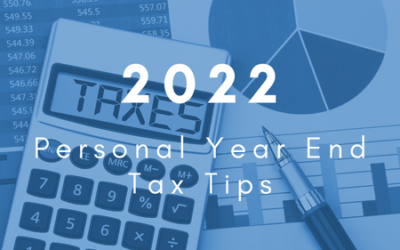Clear Path Financial Planners Blog
2022 Year End Tax Tips and Strategies for Business Owners
The end of 2022 is quickly approaching – which means for business owners, it’s time to review tax tips and strategies to maximize your benefits.
2022 Personal Year-End Tax Tips
The end of 2022 is quickly approaching – which means it’s time to get everything in order, so you’re ready when it comes time to file your taxes.
We’ve broken this article into the following sections to make it easy to find the tax tips you’re looking for:
• Investment considerations, including how to best contribute to TFSAs, RRSPs, and RDSPs.
• Families, including how to claim childcare expenses and make the most of RESPs.
• Retirees, including essential details about applying for CPP and OAS.
The Five Steps to Investment Planning
An investment advisor can help you figure out what the right investment choices are for you.
The five steps to investment planning are:
• Meeting your investment advisor
• Determining your goals and expectations
• Developing your investment plan
• Implementing your investment plan
• Monitoring the plan
The sooner you start planning for retirement, the sooner you can get there! An investment advisor can help you get there quicker.
Essential tips and tricks for paying less tax and keeping more of your retirement income
It’s important to make the most of your retirement income. To do so, you need to be aware of what income is and isn’t taxable, and also how to make the most of the tax breaks you’re entitled to. This article outlines the four main steps you need to take to ensure you keep as much of your retirement income as possible:
1. Make a financial plan.
2. Split your pension income.
3. Buy an annuity.
4. Be aware of retirement-related tax breaks.
The Five Steps to Investment Planning
An investment advisor can help you figure out what the right investment choices are for you.
The five steps to investment planning are:
• Meeting your investment advisor
• Determining your goals and expectations
• Developing your investment plan
• Implementing your investment plan
• Monitoring the plan
The sooner you start planning for retirement, the sooner you can get there! An investment advisor can help you get there quicker.
Financial Planning For Self-Employed Contractors
Being a self-employed contractor can bring you a large cash flow and the satisfaction of being your own boss – but it can also make financial planning more complicated than being an employee.
When creating a financial plan, Self-employed contractors need to keep a number of items in mind. Read to find out!
Five Ways To Withdraw Money From Your Business In A Tax-Efficient Manner
You have worked long and hard to build up your business, and now you are ready to withdraw money from your business’ bank account. But you don’t want to get hit with a huge tax bill. So here are 5 ways to withdraw money from your business in a tax-efficient manner.
Don’t lose all your hard-earned money to taxes
It’s essential to manage your tax planning properly – both while you are living and for after your death. You want as much of your money as possible to go to your beneficiaries, not the government. Our article contains three tips to help you do that:
1. Learn how to make the most of the lifetime capital gains exemption.
2. Figure out ways to decrease your end-of-life tax bill.
3. Look into Immediate Financing Arrangements.
The Six Steps to Financial Planning
A certified financial planner is trained to focus on all aspects of your finances – everything from your taxes to retirement savings.
The six steps to financial planning are:
• Meeting your financial planner
• Determining your goals and expectation
• Reviewing your current financial state
• Developing a financial plan
• Implementing a financial plan
• Monitoring the plan
A certified financial planner will develop a plan that works for you both today and in the future.









